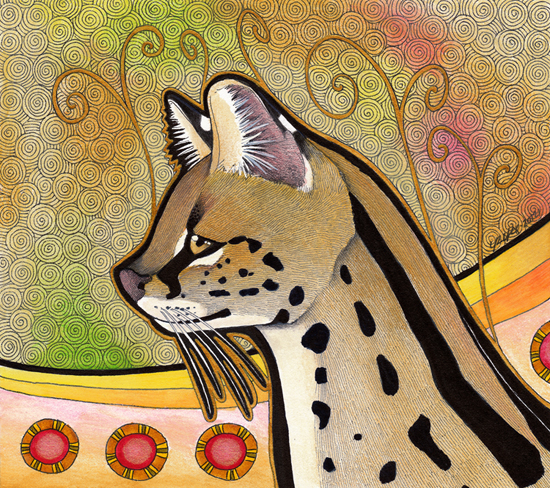Serval – Leap of Faith 
Keywords: Leap of faith. Reach for what you need, it’s there for you. Take some time for yourself. Listen carefully to what’s happening around you. If you are lost, listen. Messages in the wind. Grassland energy. Agility and trust in your body. Non-violence. A peaceable way out of conflict.
Description: The serval (Leptailurus serval) is a slender, medium-sized wild feline with a distinctive shorter tail native to Africa, common in sub-Saharan countries in particular, preferring semi-arid habitats like grasslands, moorlands and bamboo thickets with access to water bodies. Servals have the longest hindlegs in proportion to its body of any cat, and they are excellent jumpers, leaping over 2 metres or nearly 7 feet to catch prey. They are carnivores active during day and night, thought mostly crepuscal, eating rodents (around 80-90% of their diet), birds, insects and reptiles and will cache prey. They are efficient and successful hunters.
Servals are often more active when the weather is cool or rainy. Servals are generally solitary, have overlapping ranges, and mark their territory with saliva and feces. They travel most evenings, looking for certain hunting areas and using special trails. Servals are cautious, reserved animals, preferring not to fight each other, and choosing mutual avoidance. When encounters escalate, servals choose ritualistic postures rather than violence. They are able to purr, chirp, hiss, growl, meow, grunt and growl.
Servals are predated upon by hyenas and African painted dogs which they choose to escape by fleeing and jumping. Hunting the serval is protected or regulated. Their main threats are degradation of habitat, hunting and poaching and use in traditional medicine. They have been kept as pets, but this is regulated in many countries. Servals were significantly associated with humans in Ancient Egypt.
Was this helpful?
0 / 0